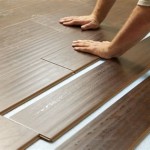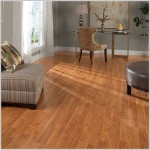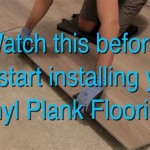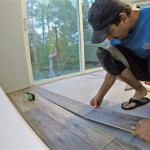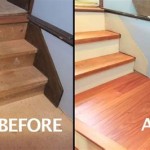How to Remove Super Glue From Luxury Vinyl Plank Flooring
Luxury vinyl plank (LVP) flooring provides a durable and aesthetically pleasing surface for homes and businesses. Its water resistance, ease of installation, and realistic appearance make it a popular choice. However, accidental spills and mishaps can occur, including the dreaded super glue incident. Super glue, known for its rapid and strong bonding capabilities, can be a formidable challenge to remove from LVP flooring without causing damage. This article details effective methods for removing super glue from LVP flooring while minimizing the risk of harming the material's surface and integrity.
The successful removal of super glue hinges on a strategic approach, considering the type of super glue, the extent of the spill, and the specific characteristics of the LVP flooring. Rushing the process or using abrasive materials can lead to scratches, discoloration, or even delamination of the vinyl layer. Therefore, it's crucial to proceed methodically, starting with the least aggressive techniques and gradually escalating to stronger solvents only when necessary. Safety precautions are also paramount, including proper ventilation and the use of protective gear, as some solvents can release harmful fumes.
Before embarking on any removal method, it is essential to gather the necessary supplies and prepare the work area. Essential tools include a plastic scraper or putty knife, soft cloths, cotton swabs, a vacuum cleaner, and appropriate cleaning solutions. Depending on the chosen method, these might include acetone, isopropyl alcohol, white vinegar, or specialized adhesive removers. Protecting the surrounding area with drop cloths or masking tape is also recommended to prevent accidental damage from cleaning solutions.
Testing and Preparation
Prior to commencing any cleaning method on the primary affected area, a discreet test patch is critical. This step ensures that the chosen solvent or technique does not negatively impact the LVP flooring's color, texture, or finish. Select an inconspicuous area, such as a corner hidden under furniture, to apply a small amount of the cleaning solution. Allow the solution to sit for a short period, as recommended by the product instructions or the described method, and then wipe it away with a clean cloth. Observe the test area for any signs of discoloration, softening, or other adverse reactions. If any damage occurs, discontinue the use of that particular method and explore alternative options.
Proper preparation of the affected area is also crucial for successful super glue removal. Begin by carefully removing any loose debris or surface-level contaminants from around the glue spill. A vacuum cleaner equipped with a soft brush attachment can be used to gently remove dust, dirt, and small particles. Avoid applying excessive pressure or using abrasive tools during this step, as this can scratch the LVP surface and make the glue removal process more difficult.
If the super glue is still wet or partially hardened, allow it to dry completely before attempting removal. Trying to wipe or scrape away wet glue can spread the adhesive and create a larger, more problematic area. Once the glue has fully dried, it will be more brittle and easier to chip away without smearing.
Methods for Super Glue Removal
Several methods can be employed to remove super glue from LVP flooring, ranging from gentler, less invasive techniques to stronger solvent-based approaches. The choice of method depends on the severity of the spill, the type of super glue used, and the flooring material's sensitivity. It is recommended to start with the mildest methods and gradually progress to more aggressive solutions if necessary, always testing in an inconspicuous area first.
The Gentle Scraping Method: This method is suitable for small, hardened glue spills that have not deeply penetrated the LVP surface. Using a plastic scraper or putty knife, carefully attempt to chip away the dried glue. Hold the scraper at a low angle to the flooring surface to minimize the risk of scratching. Apply gentle pressure and work slowly, focusing on lifting the edges of the glue rather than scraping across the entire area. If the glue is resistant to scraping, try softening it slightly with warm water or a hairdryer on a low setting before proceeding.
Utilizing Acetone: Acetone, commonly found in nail polish remover, is a potent solvent that can dissolve super glue. However, it should be used with caution on LVP flooring, as it can potentially damage the finish or cause discoloration. Before using acetone, ensure adequate ventilation by opening windows or using a fan. Apply a small amount of acetone to a cotton swab and gently dab it onto the super glue. Allow the acetone to sit for a few minutes to soften the glue. Then, use a plastic scraper or a clean cloth to gently wipe away the softened adhesive. Repeat the process as needed, being careful not to saturate the LVP flooring with acetone. After removing the glue, thoroughly clean the area with a mild soap and water solution to remove any residual acetone.
Isopropyl Alcohol Application: Isopropyl alcohol, also known as rubbing alcohol, is a less aggressive solvent than acetone and may be effective for removing smaller super glue spills or softening stubborn residue. Apply isopropyl alcohol to a clean cloth or cotton swab and gently rub it onto the affected area. Allow the alcohol to sit for a few minutes to penetrate the glue. Use a plastic scraper to carefully lift the softened glue from the LVP surface. Repeat the process as needed, and then clean the area with a damp cloth to remove any alcohol residue.
Employing White Vinegar: White vinegar is a natural and relatively mild cleaning agent that can sometimes be effective in softening super glue. Soak a clean cloth in white vinegar and place it over the glue spill. Allow the vinegar to sit for several minutes to saturate the glue. Then, use a plastic scraper to gently lift and remove the softened adhesive. Wipe the area clean with a damp cloth to remove any vinegar residue. This method may require multiple applications to fully remove the super glue.
Specialized Adhesive Removers: Several commercially available adhesive removers are specifically designed to dissolve various types of adhesives, including super glue. These products often contain a blend of solvents that are formulated to be effective while minimizing the risk of damage to flooring surfaces. When using an adhesive remover, carefully follow the manufacturer's instructions. Typically, the product is applied to the glue spill and allowed to sit for a specified time before being wiped away with a clean cloth or scraped off with a plastic scraper. Always test the adhesive remover in an inconspicuous area before applying it to the main affected area.
Post-Removal Care and Maintenance
After successfully removing the super glue from the LVP flooring, it's essential to properly clean and maintain the area to restore its original appearance and protect it from future damage. Begin by thoroughly cleaning the affected area with a mild soap and water solution. Use a soft cloth or sponge to gently wipe the surface, removing any residual cleaning agents or glue residue. Rinse the area with clean water and dry it thoroughly with a clean, dry cloth.
If the LVP flooring appears dull or scratched after removing the super glue, a floor polish or restorer specifically designed for vinyl flooring can be applied to restore its shine and protect the surface. Follow the manufacturer's instructions for application and buffing. Regular cleaning and maintenance of the LVP flooring will help to prevent future stains, scratches, and other damage.
To prevent future super glue spills, consider using alternative adhesives such as glue dots or repositionable glue sticks for projects that may not require a permanent bond. When using super glue, work in a well-ventilated area and protect the surrounding surfaces with drop cloths or scrap materials. Clean up spills immediately with a damp cloth or paper towel before the glue has a chance to dry.
Addressing super glue mishaps on LVP flooring requires patience, careful technique, and a systematic approach. By using the methods described in this article and exercising caution, it is possible to remove super glue without causing significant damage to the flooring. Consistent care and preventive measures will contribute to maintaining the beauty and longevity of the LVP flooring.

How To Remove Glue From Vinyl Floor Ready Diy

How To Remove Glue Or Adhesive From Vinyl Flooring After Installation

How To Remove Glue Or Adhesive From Vinyl Flooring After Installation

How To Clean Floor Glue And Heavy Dirt Off Luxury Vinyl Flooring

How To Remove Glue Or Adhesive From Vinyl Flooring After Installation

How To Remove Glue Or Adhesive From Vinyl Flooring After Installation
How To Remove Adhesive From Vinyl Floors Quora

How To Remove Glue From Vinyl Floor Ready Diy

How To Remove Glue Or Adhesive From Vinyl Flooring After Installation

How To Remove Glue Or Adhesive From Vinyl Flooring After Installation
Related Posts

